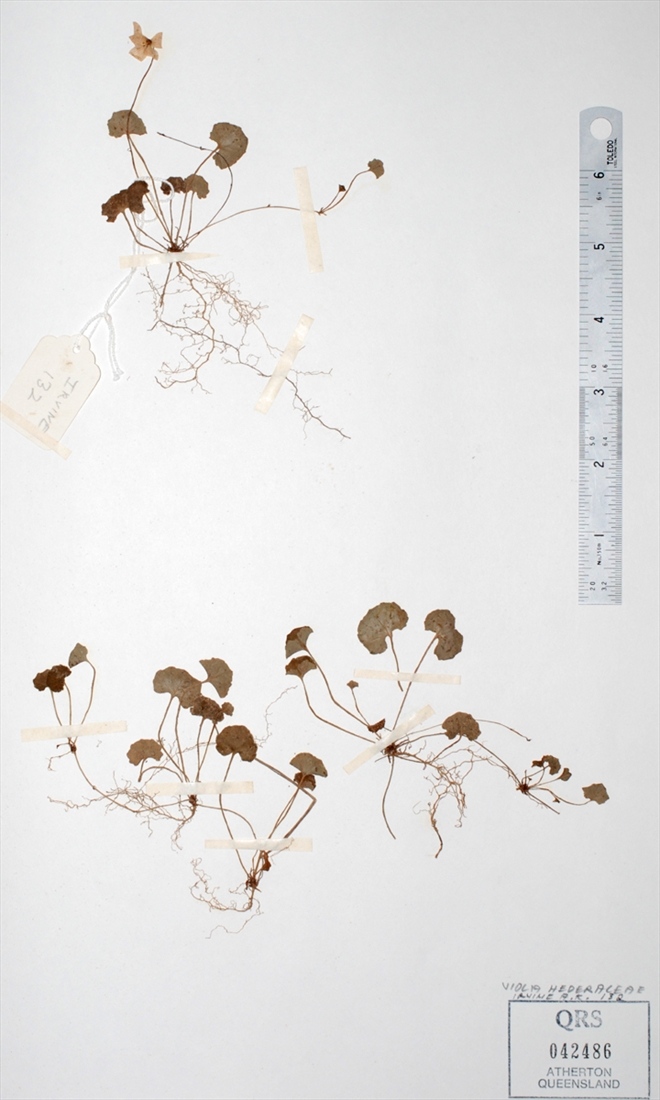Australian Tropical Rainforest Plants - Online edition
Viola perreniformis (L.G.Adams) R.J.Little & Leiper
Little, R.J. & Leiper, G. (2013) Austrobaileya 9(1): 82-83.
Violet, Ivy-leaved; Ivy-leaved Violet
Inflorescence longer than the leaves. Scape up to 90 mm long, pubescent, curved downwards before flowering. Bracteoles 2, linear, 2.5-3 mm long, in middle of scape. Sepals 4.5-5 mm long, with basal appendages. Corolla 7-13 mm long, ca. concolorous, pale blue-violet; lateral petals entire, bearded with tongue-shaped papillae and distinctly twisted; anterior petal shallowly saccate. Top of anthers forming a hood-like structure. Style 2 mm long with a slight bent near base. Ovary 1.5-2 mm, green with purplish spots near apex.
Features not available.
This taxon is possibly Viola hederacea subsp. perreniformis L.G.Adams
Viola hederacea subsp. perreniformis L.G.Adams, Flora of Australia 8: 386 (1982). Type: ca 40 km SE of Gladstone, Many Peaks Range, 1.2 km WSW of Mt. Castletower, Port Curtis District, Qld, 2 June 1977, M.D.Crisp 2751 & R.K.Ellyard.







